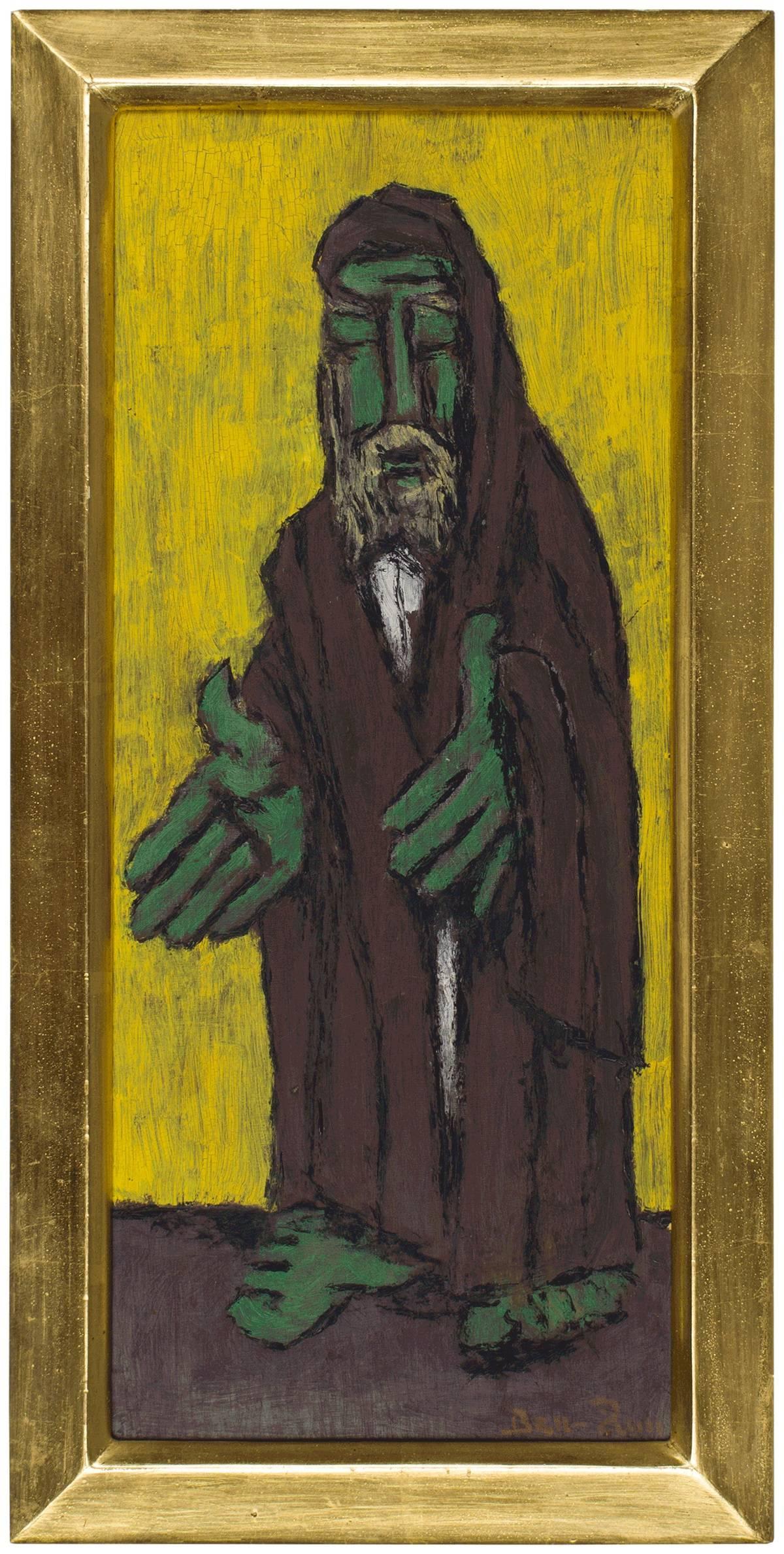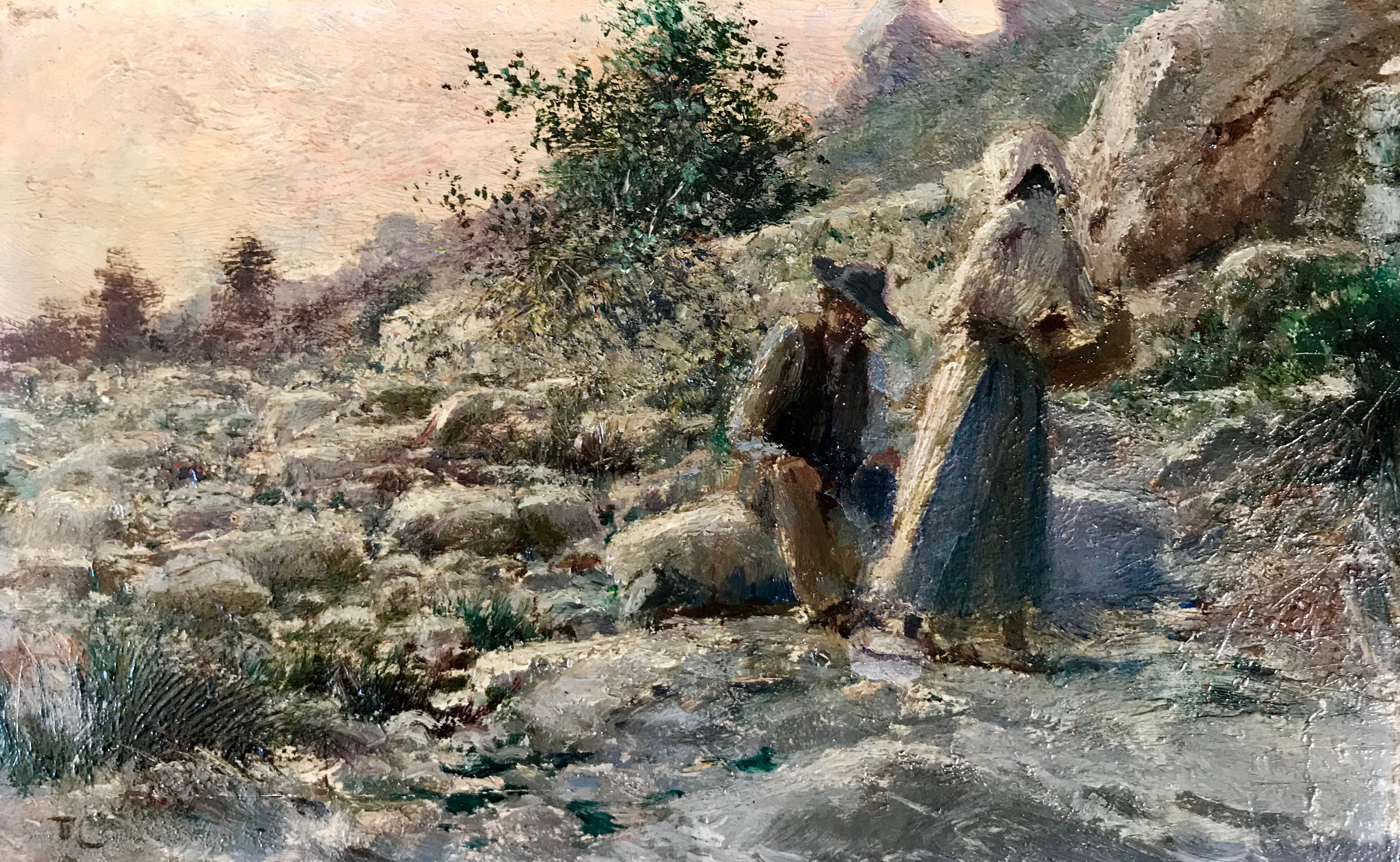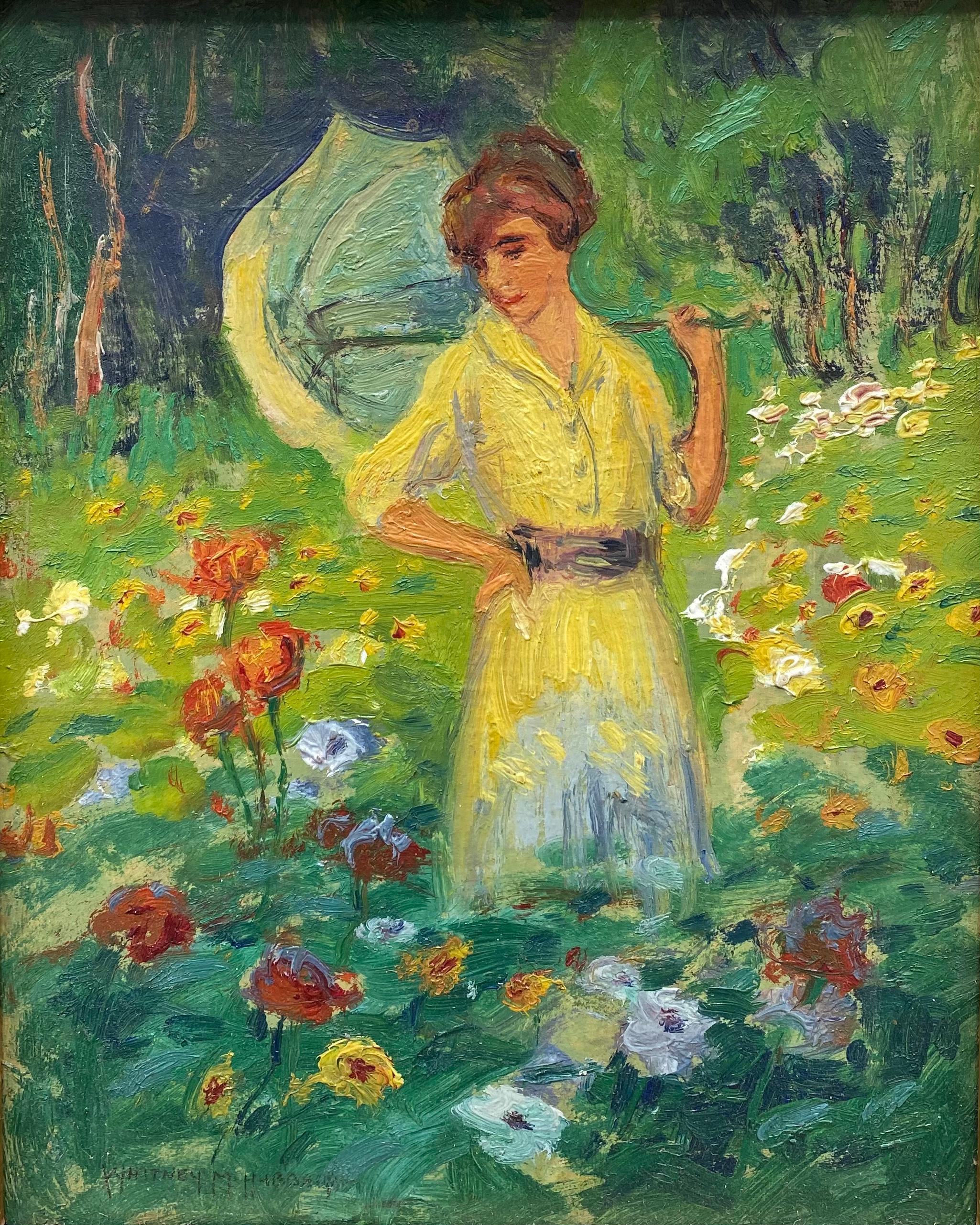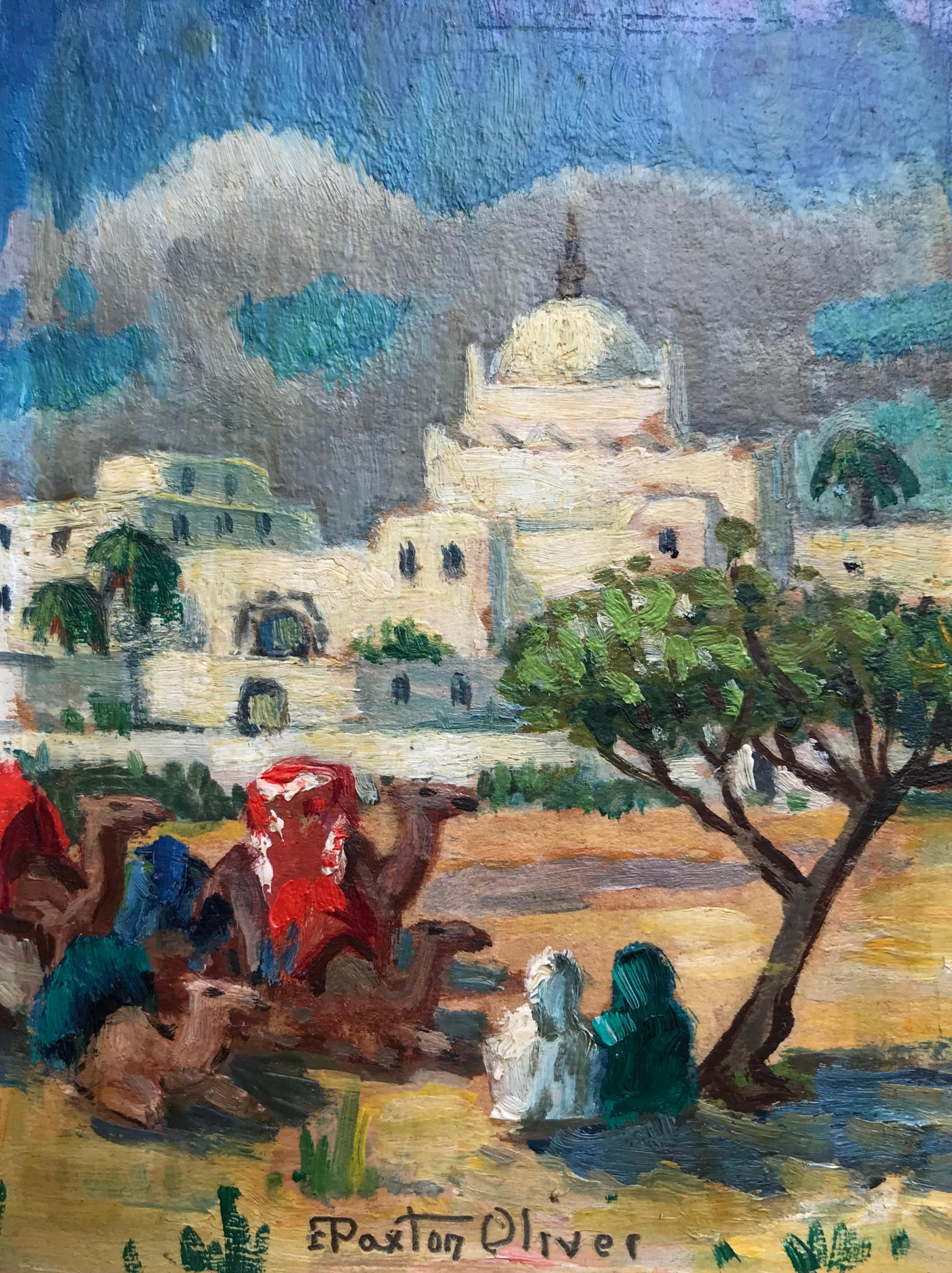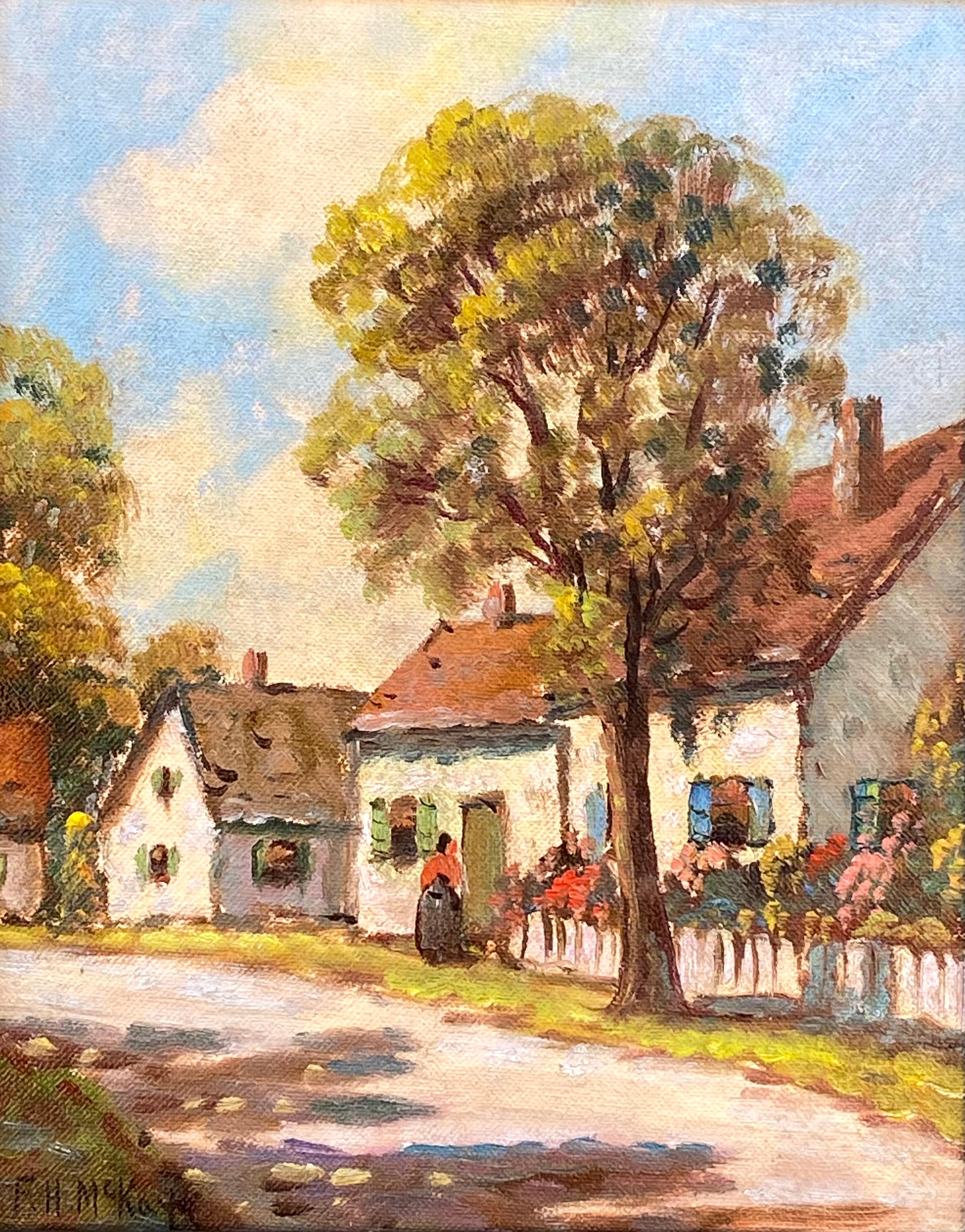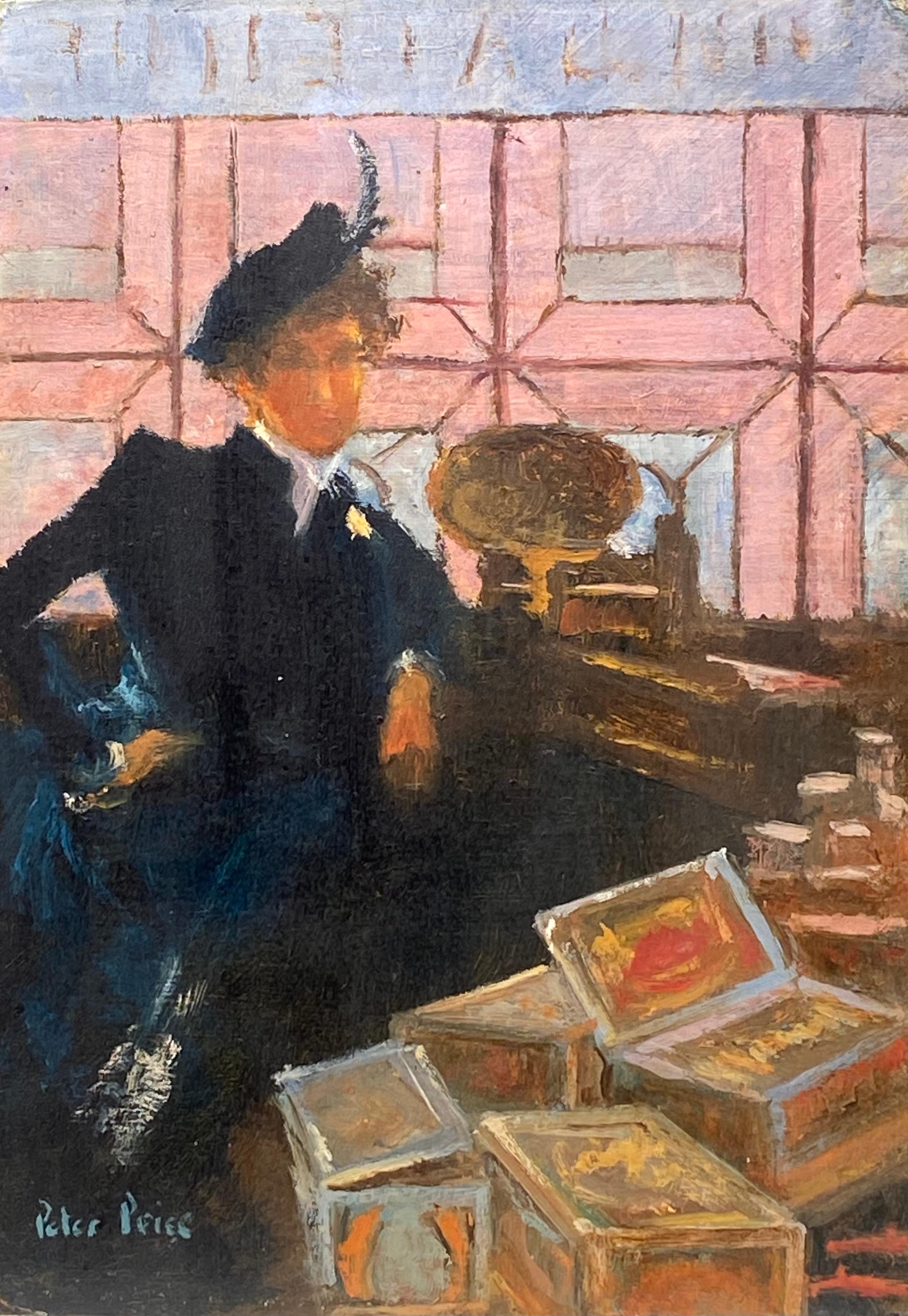Items Similar to Simchat Torah, Rejoicing with the Torah Jewish Holiday Judaica Painting
Want more images or videos?
Request additional images or videos from the seller
1 of 6
N. Henry BinghamSimchat Torah, Rejoicing with the Torah Jewish Holiday Judaica Painting
About the Item
Genre: Judaica
Subject: Religious
Medium: Oil
Surface: Board
Dimensions: 16" x 12"
Dimensions w/Frame: 18 3/4" x 14 3/4"
An sensitive and charming oil on wood panel painting by the well-known contemporary painter N. Henry Bingham who is known for his rendition of earlier periods of art; at first glance this oil appears to be from the late 19thc; Bingham masterfully paints the Judaica genre in this adaptation of a Synagogue setting on a solemn yet joyous holiday eve.
- Creator:
- Dimensions:Height: 18.75 in (47.63 cm)Width: 14.75 in (37.47 cm)
- Medium:
- Movement & Style:
- Period:
- Condition:
- Gallery Location:Surfside, FL
- Reference Number:1stDibs: LU38211816202
About the Seller
4.9
Platinum Seller
These expertly vetted sellers are 1stDibs' most experienced sellers and are rated highest by our customers.
Established in 1995
1stDibs seller since 2014
1,541 sales on 1stDibs
Typical response time: 1 hour
- ShippingRetrieving quote...Ships From: Surfside, FL
- Return PolicyA return for this item may be initiated within 3 days of delivery.
More From This SellerView All
- Modernist Rabbi Judaica Bold Color "School of 10"By Ben-Zion WeinmanLocated in Surfside, FLDimensions w/Frame: 16" x 8" x 1 1/2" Born in 1897, Ben-Zion Weinman celebrated his European Jewish heritage in his visual works as a sculptor, painter, and printmaker. Influenced by Spinoza, Knut Hamsun, and Wladyslaw Reymont, as well as Hebrew literature, Ben-Zion wrote poetry and essays that, like his visual work, attempt to reveal the deep “connection between man and the divine, and between man and earth.” An emigrant from the Ukraine, he came to the US in 1920. He wrote fairy tales and poems in Hebrew under the name Benzion Weinman, but when he began painting he dropped his last name and hyphenated his first, saying an artist needed only one name. Ben-Zion was a founding member of “The Ten: An Independent Group” The Ten” a 1930’s avant-garde group, Painted on anything handy. Ben-Zion often used cabinet doors (panels) in his work. Other members of group included Ilya Bolotowsky, Lee Gatch, Adolf Gottlieb...Category
20th Century Fauvist Figurative Paintings
MaterialsCoating, Oil, Board
- Modernist Woman With Flowers in ForestBy Donald Roy PurdyLocated in Surfside, FLGenre: Modern Subject: Figures Medium: Oil Surface: Board Country: United States Dimensions w/Frame: 31 x 37 Donald Roy Purdy is an American painter whose work evolved through a ran...Category
20th Century Fauvist Figurative Paintings
MaterialsOil, Board
- Modernist SUNDAY MORNING HARVEST Woman with Flowers Oil PaintingBy Donald Roy PurdyLocated in Surfside, FLGenre: Modern Subject: Figures Medium: Oil Surface: Board Country: United States signed lower left Donald Roy Purdy is an American painter whose work evolved through a range of styl...Category
20th Century Fauvist Figurative Paintings
MaterialsOil, Board
- Modernist WILD THING Woman in Forest Oil PaintingBy Donald Roy PurdyLocated in Surfside, FLGenre: Modern Subject: Figures Medium: Oil Surface: Board Country: United States signed lower left Donald Roy Purdy is an American painter whose work evolved through a range of styl...Category
20th Century Fauvist Figurative Paintings
MaterialsOil, Board
- Wisdom of King Solomon Rare Biblical Hungarian Judaica Oil PaintingBy Anton PeczelyLocated in Surfside, FLRare Pre World War II (Pre Holocaust) Judaica Art. European Judaic art from this period is exceedingly rare. Péczely Antal Anton 1891 - 1963 Known for his Jewish genre scenes, Chess scenes and other early 20th Century salon style paintings. In the tradition of Moritz Oppenheim...Category
Early 20th Century Post-Impressionist Figurative Paintings
MaterialsOil, Board
- Rare French, Paris 1935 Judaica Oil Painting Rabbis Studying S. FleischmanLocated in Surfside, FLRare Judaica Art. Jewish genre scene. In the tradition of Moritz Oppenheim, Isidor Kauffman and Maurycy Gottlieb and later of Tully Filmus, Zalman Kleinman and Itshak Holtz the artist captures this Jewish scene with a particular sensitivity. Part of the Ecole De Paris The term "School of Paris" was used in 1925 by André Warnod (fr) to refer to the many foreign-born artists who had migrated to Paris. School of Paris artists were progressively marginalized. Beginning in 1935 art publications no longer wrote about Marc Chagall, just magazines for Jewish audiences, and by June 1940 when the Vichy government took power, School of Paris artists could no longer exhibit in Paris at all. The artists working in Paris between World War I and World War II experimented with various styles including Cubism, Orphism, Surrealism and Dada. Foreign and French artists working in Paris included Jean Arp, Joan Miró, Constantin Brâncuși, Raoul Dufy, Tsuguharu Foujita, artists from Belarus like Michel Kikoine, Pinchus Kremegne, and Jacques Lipchitz, the Polish artist Marek Szwarc and others such as Russian-born prince Alexis Arapoff. A significant subset, the Jewish artists, came to be known as the Jewish School of Paris or the School of Montparnasse. The "core members were almost all Jews, and the resentment expressed toward them by French critics in the 1930s was unquestionably fueled by anti-Semitism." One account points to the 1924 Salon des Indépendants, which decided to separate the works of French-born artists from those by immigrants; in response critic Roger Allard (fr) referred to them as the School of Paris. Jewish members of the group included Emmanuel Mané-Katz, Chaim Soutine, Adolphe Féder, Chagall, Moïse Kisling, Maxa Nordau...Category
Mid-20th Century Post-Impressionist Figurative Paintings
MaterialsOil, Board
You May Also Like
- “Late in the Day”Located in Southampton, NYOil on wooden panel by the Spanish artist, Thomas Campuzano y Aguirre. Seated man on a large rock with a hat with a woman with basket standing close by. Circa 1910. In very good o...Category
1910s Post-Impressionist Figurative Paintings
MaterialsOil, Board
- "In the Garden"By Whitney Myron HubbardLocated in Southampton, NYWhitney Myron Hubbard's wife in the garden Signed in pencil lower left Whitney M. Hubbard. Framed in a contemporary gold leaf frame 16 by 13.75 inches. A seventy year resident of G...Category
1920s Post-Impressionist Figurative Paintings
MaterialsOil, Board
- “Resting the Camels”By Elizabeth Paxton OliverLocated in Southampton, NYBeautifully detailed oil on heavy card stock painting of an orientalist scene with camels resting and two figures taking the shade under a tree with several large impressive building...Category
1930s Post-Impressionist Figurative Paintings
MaterialsBoard, Oil
- “Village Cottages”By C. Hjalmar AmundsenLocated in Southampton, NYVery well painted oil on artist board painting by “Cappy” Amundsen who painted under many aliases, including F. H. McKay. Signed lower left F.H. McKay. Circa 1955. Condition is excellent. Recently professionally cleaned. Catalda Fine Arts copyright stamp verso. Overall very nicely framed in a period gold leaf ornate frame 15.75 by 13.75 inches in fine condition. The sheer volume of high quality sea and coastal village themed paintings that was on view at the Sag Harbor Whaling Museum several years ago was astounding. The work was by a select group of artists such as André Picot...Category
1950s Post-Impressionist Figurative Paintings
MaterialsOil, Board
- “Cigar Seller”Located in Southampton, NYOil paint on card stock by the New Zealand artist Peter Price. Signed lower left. Circa 1975. Titled verso “Cigar Seller”. Framed in antique style contempo...Category
1970s Post-Impressionist Figurative Paintings
MaterialsBoard, Oil
- Dancers Resting - Mid-Late 20th Century Impressionist of Ballet by Frank HillBy Frank HillLocated in Watford, HertfordshireFrank Hill is a professional artist living and working in North Norfolk. He studied art at Waltham Forest School of Art and later at St Martins School of Art. Frank’s professional c...Category
1970s Post-Impressionist Figurative Paintings
MaterialsMixed Media, Board, Oil, Charcoal
Recently Viewed
View AllMore Ways To Browse
Jewish Contemporary
Jewish Contemporary Art
Jewish Oil
Jewish Oil Painting
Jewish Art Framed
Religious Figurative Paintings
Judaica Jewish
Judaica Paintings
Jewish Wood
Religious Jewish
Judaica Paint
Synagogue Painting
Jewish Impressionist
Jewish Religious Art
Jewish Synagogue
Contemporary Judaica
19thc Paintings
Wood Art Board 12x12
